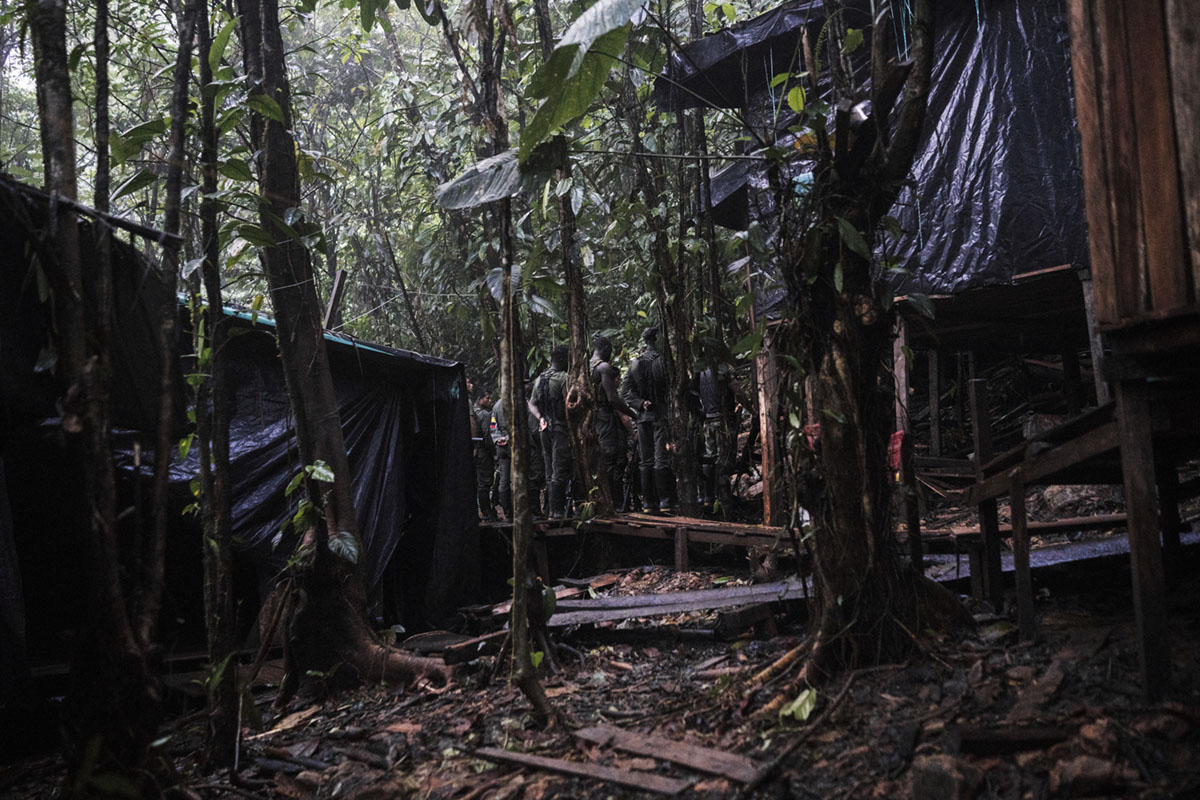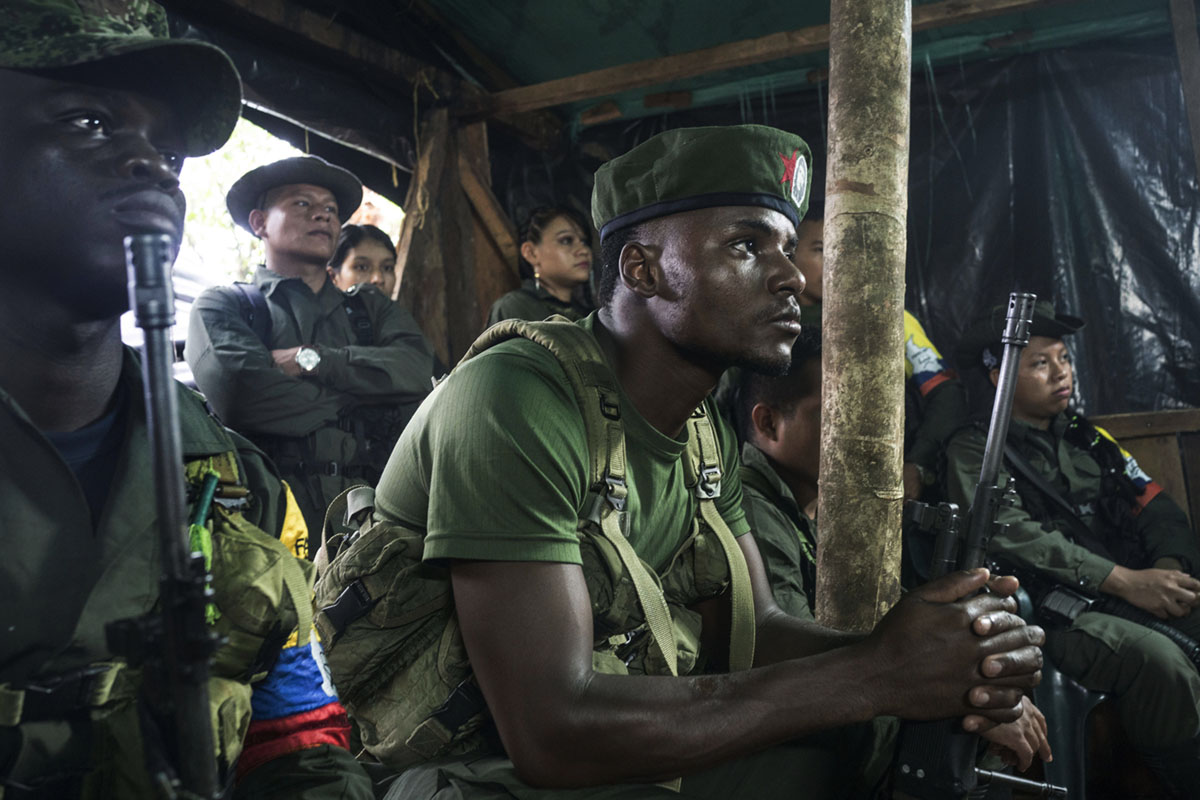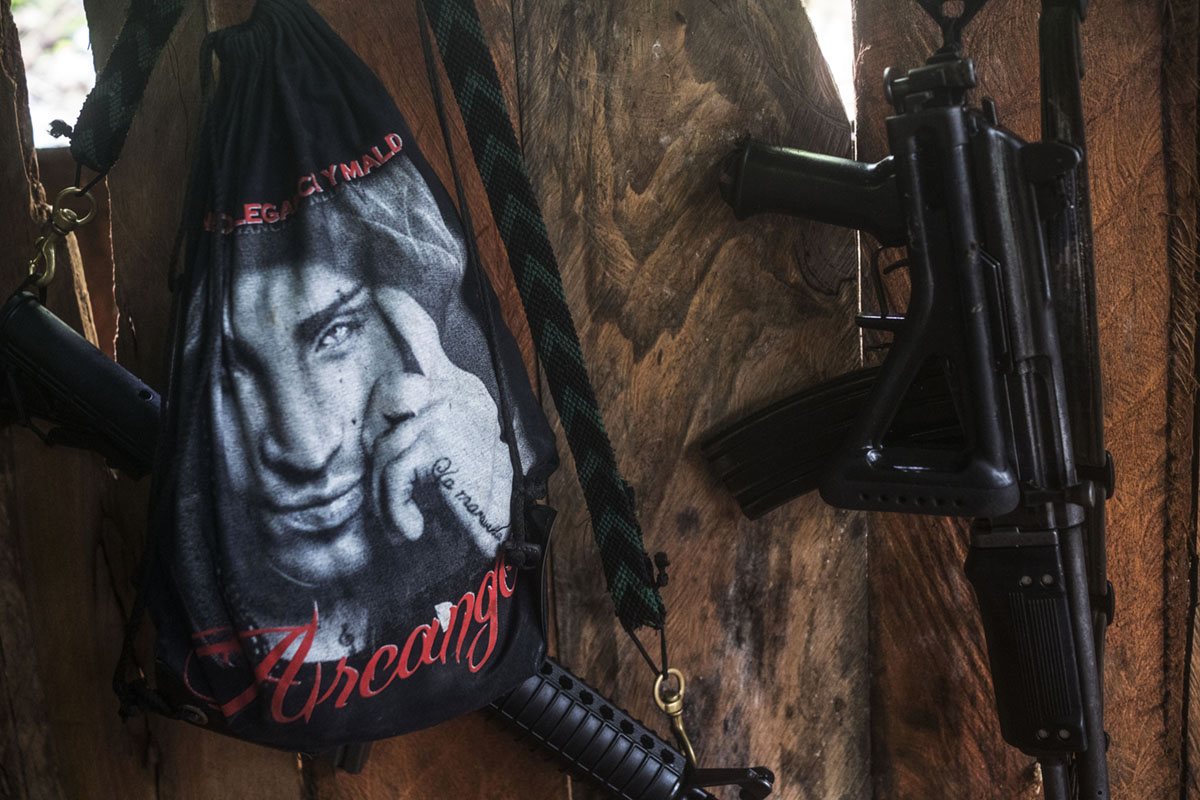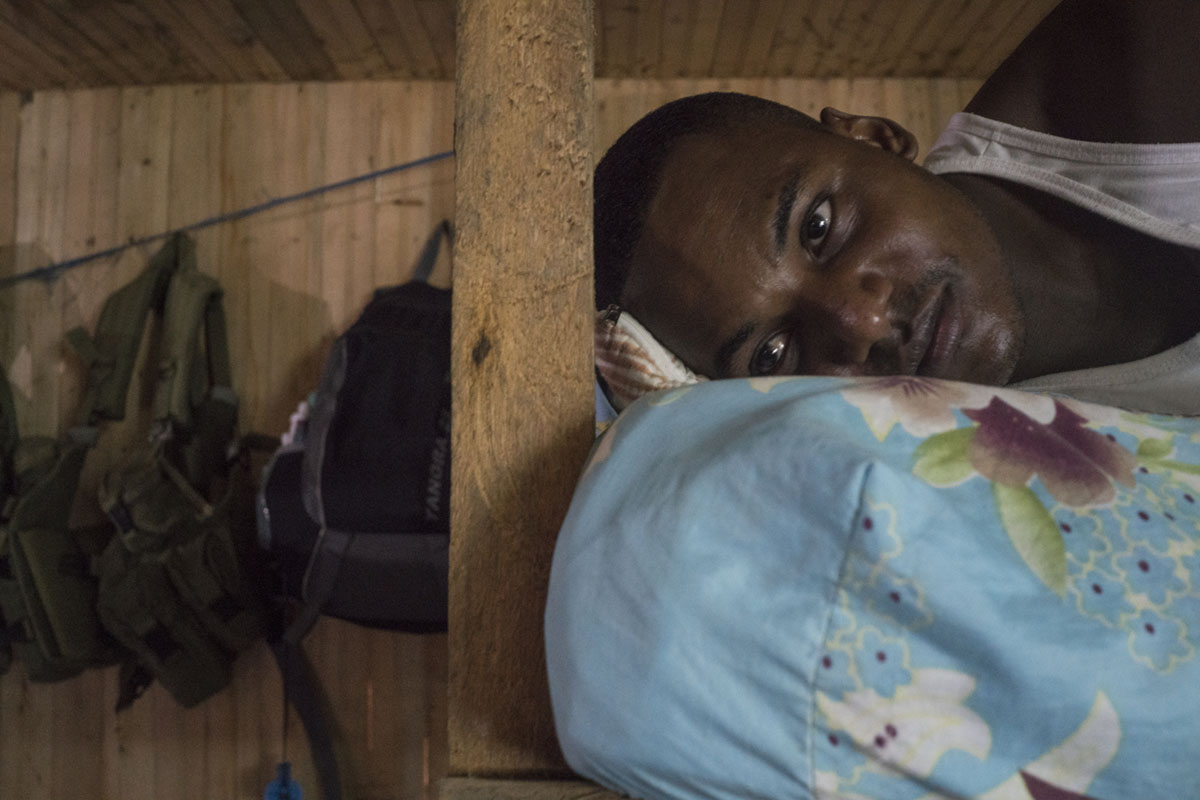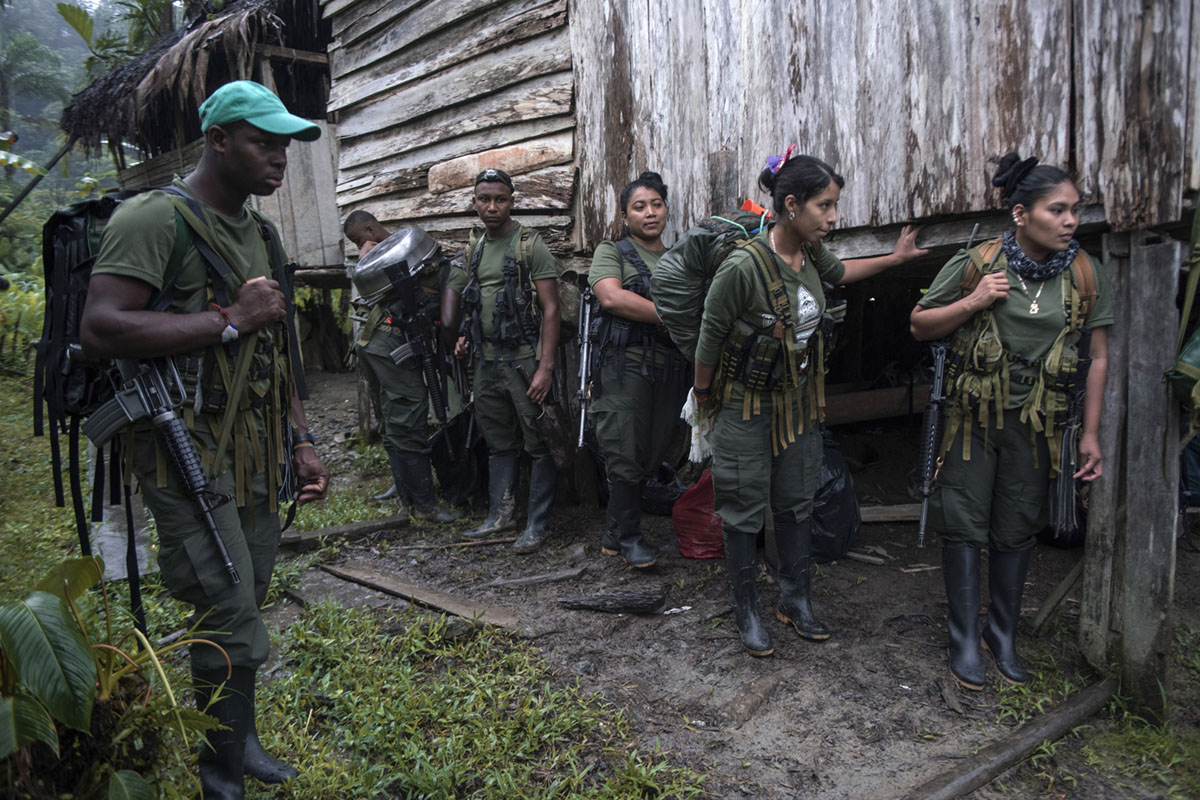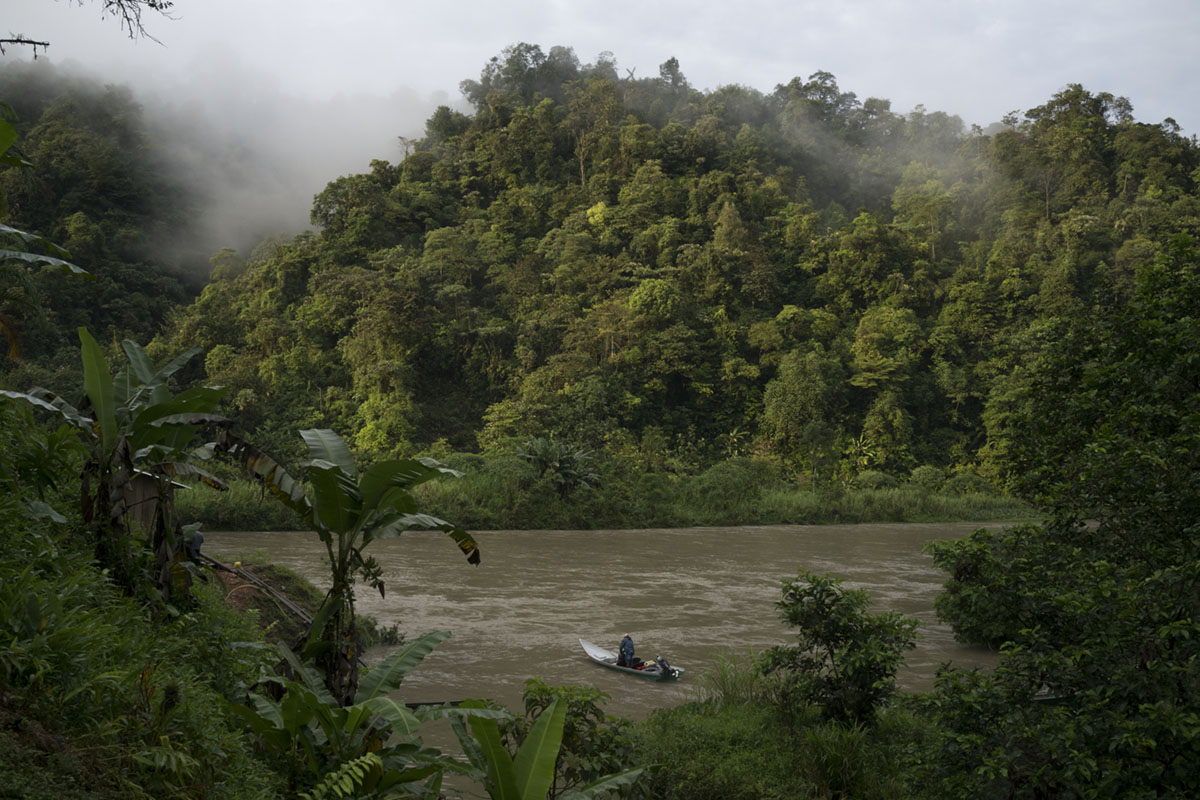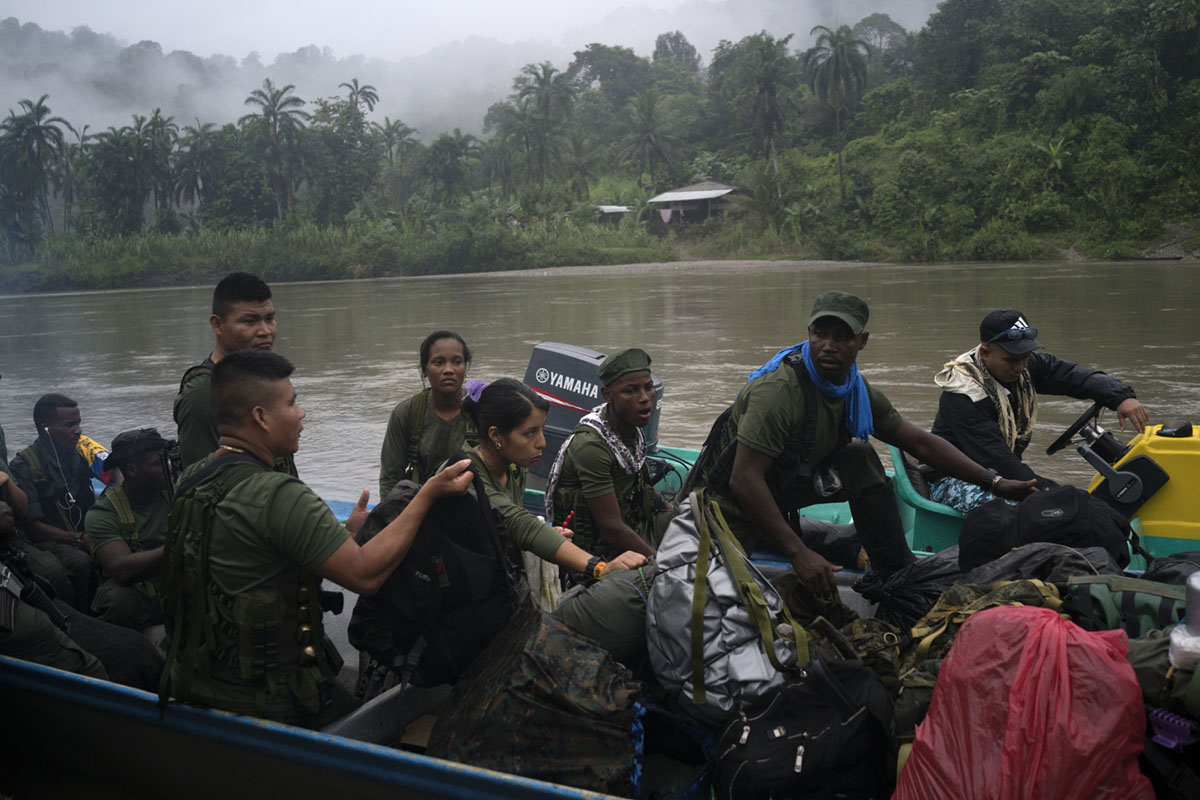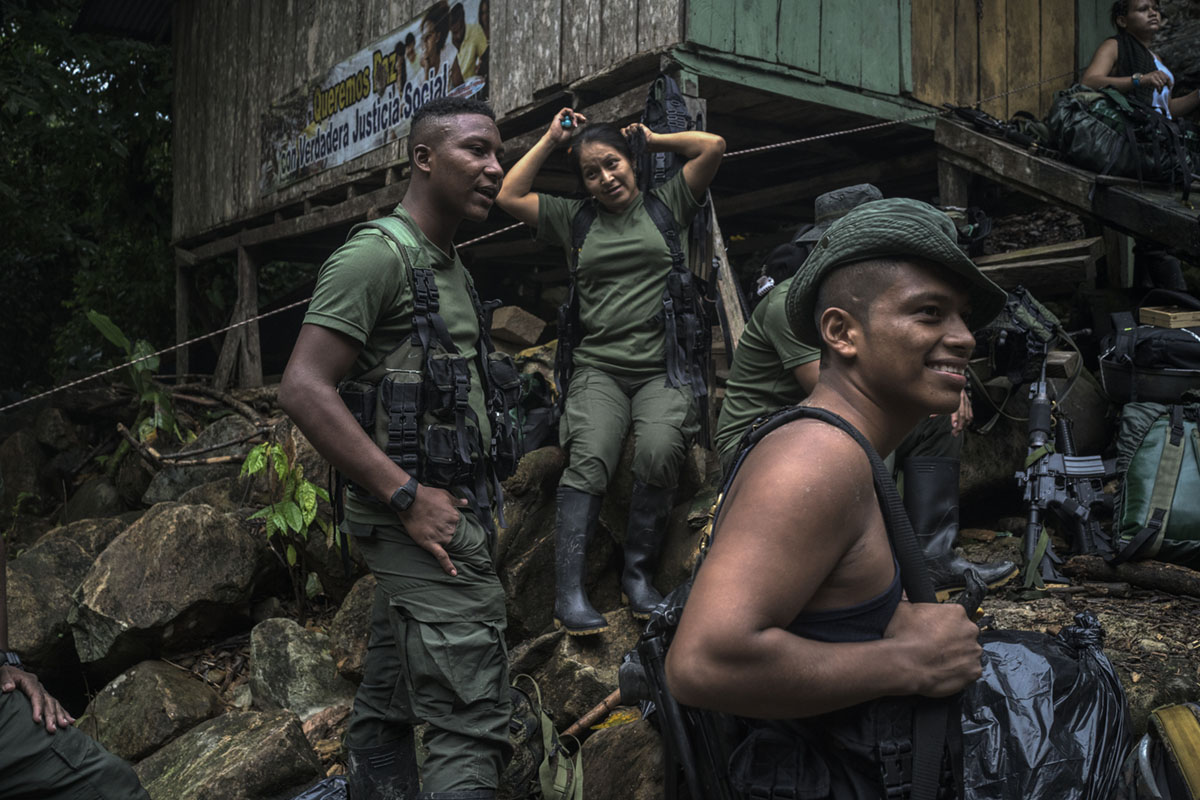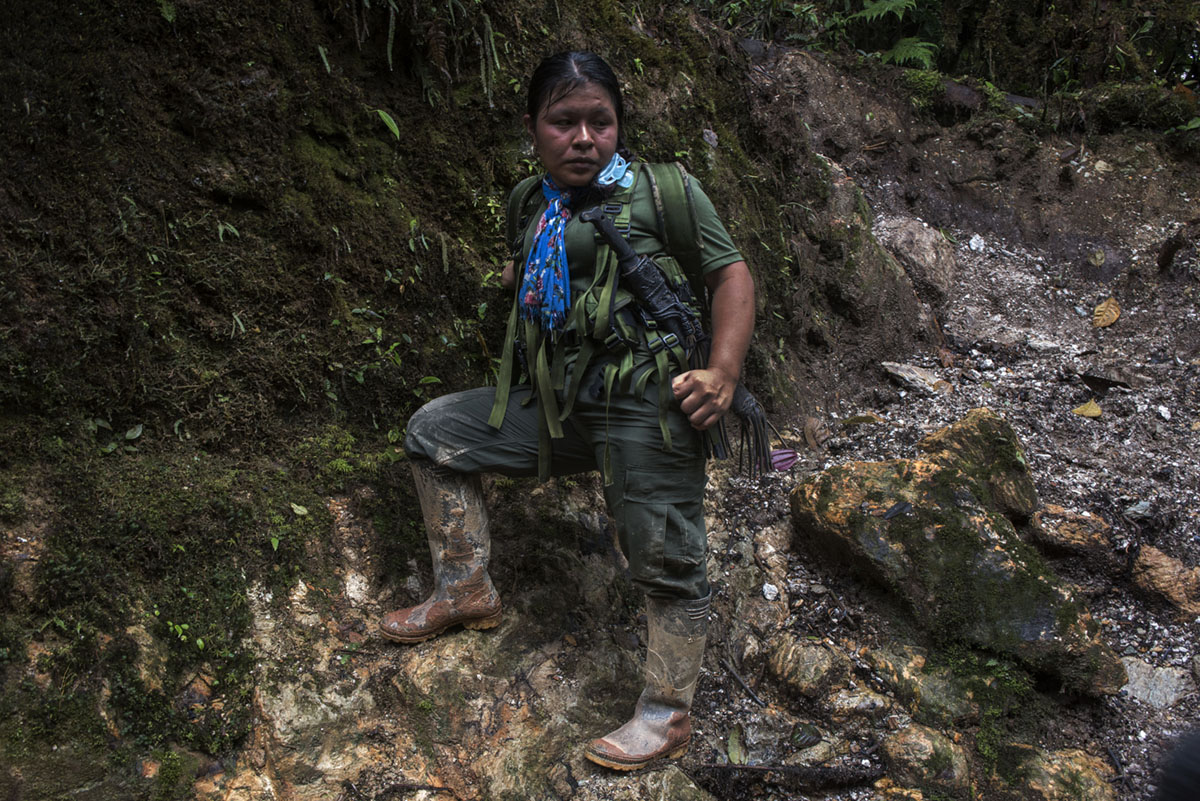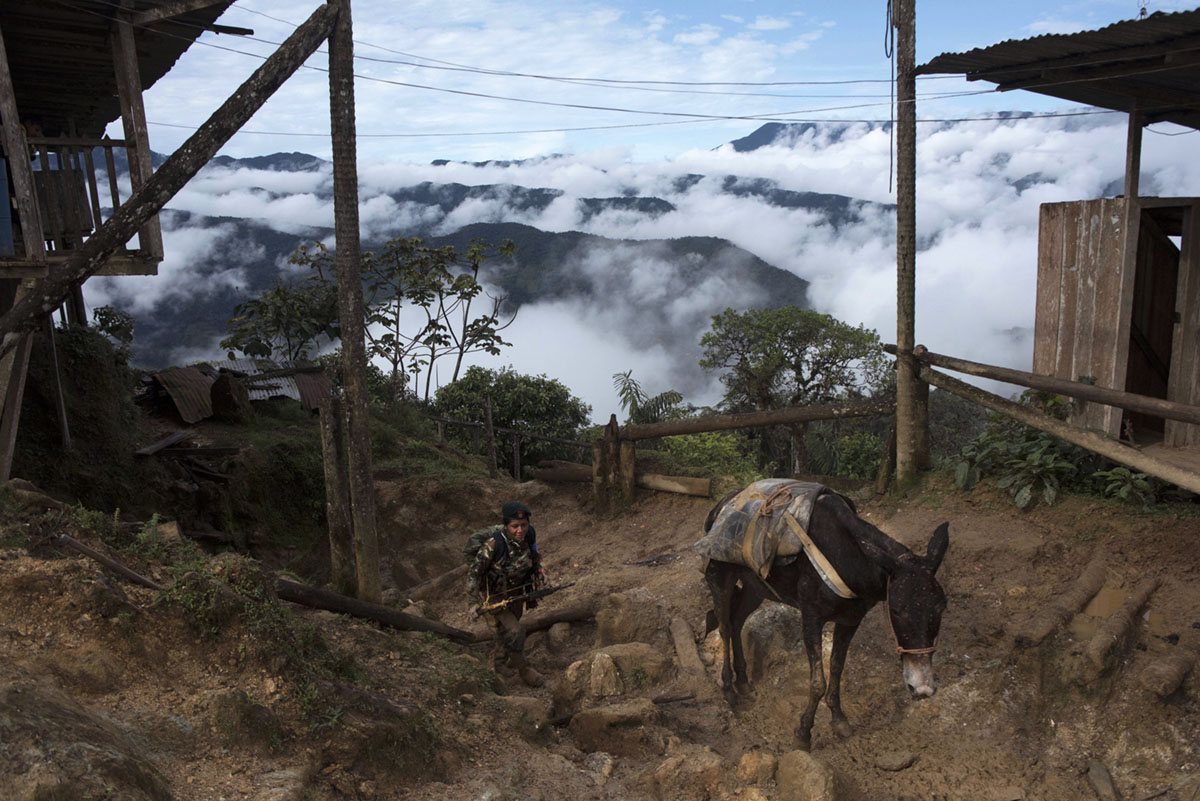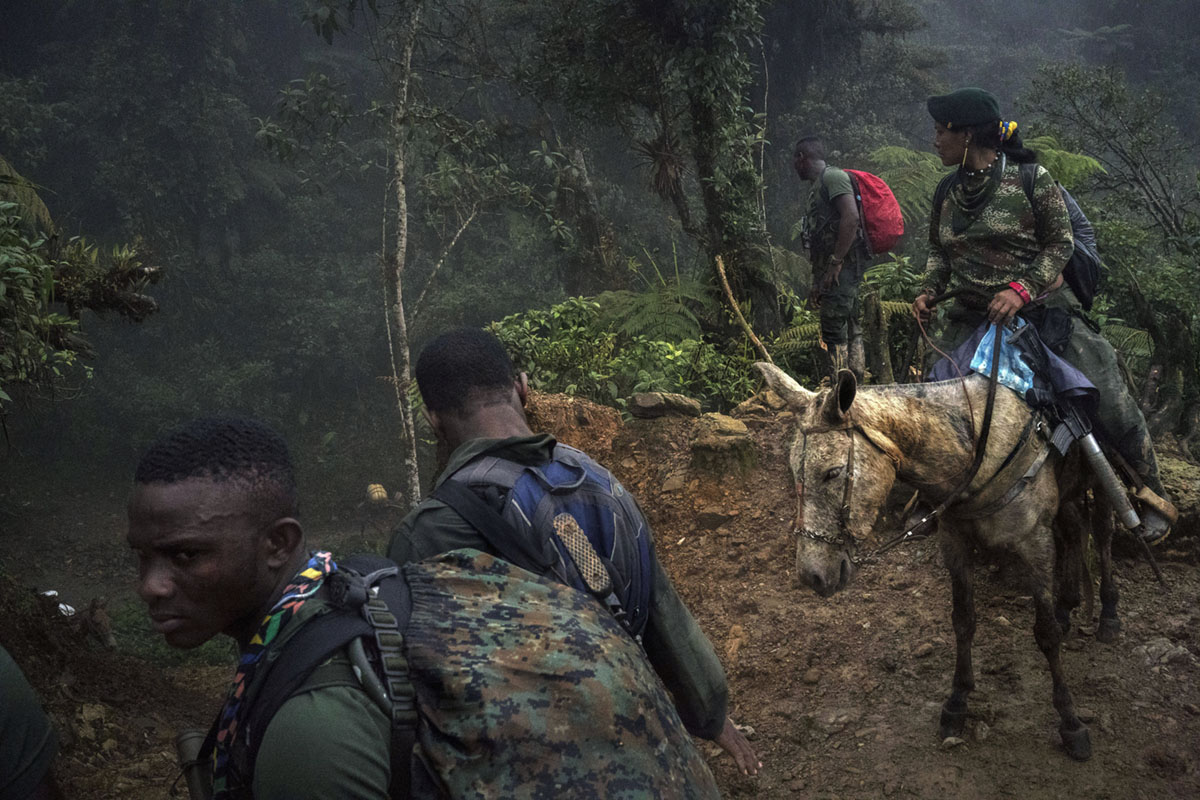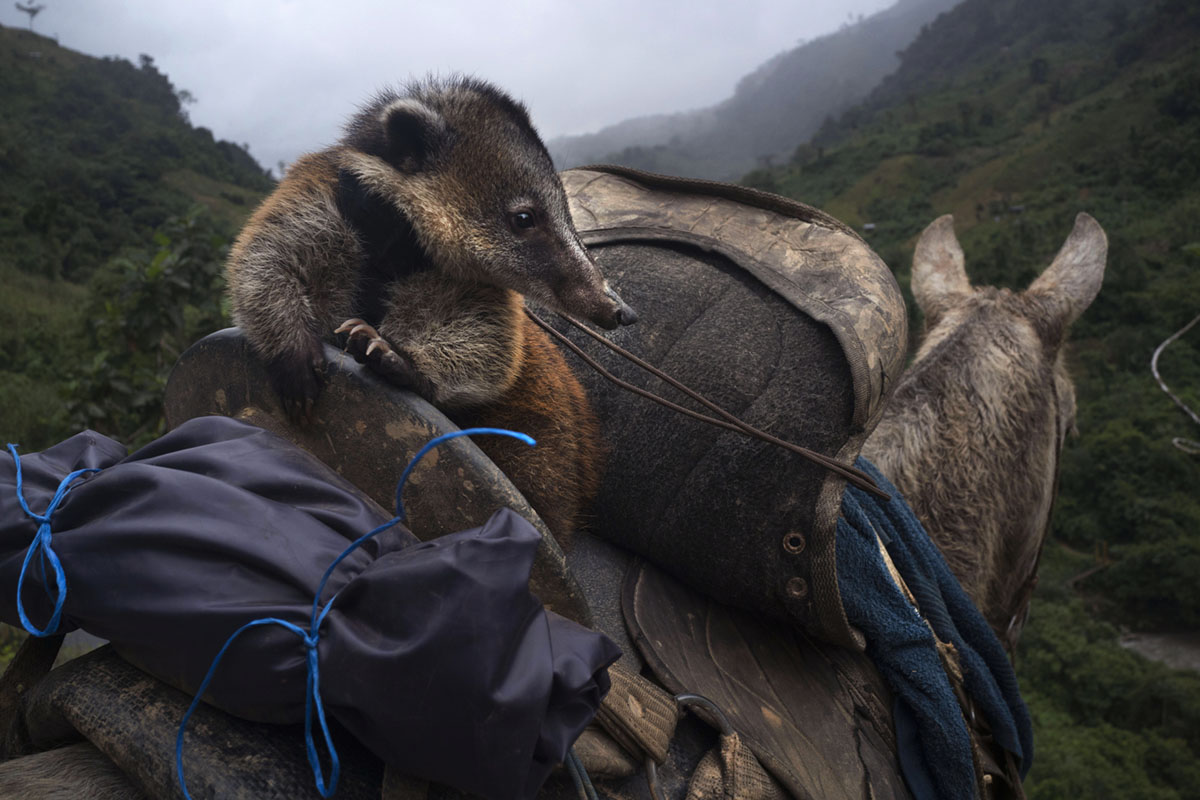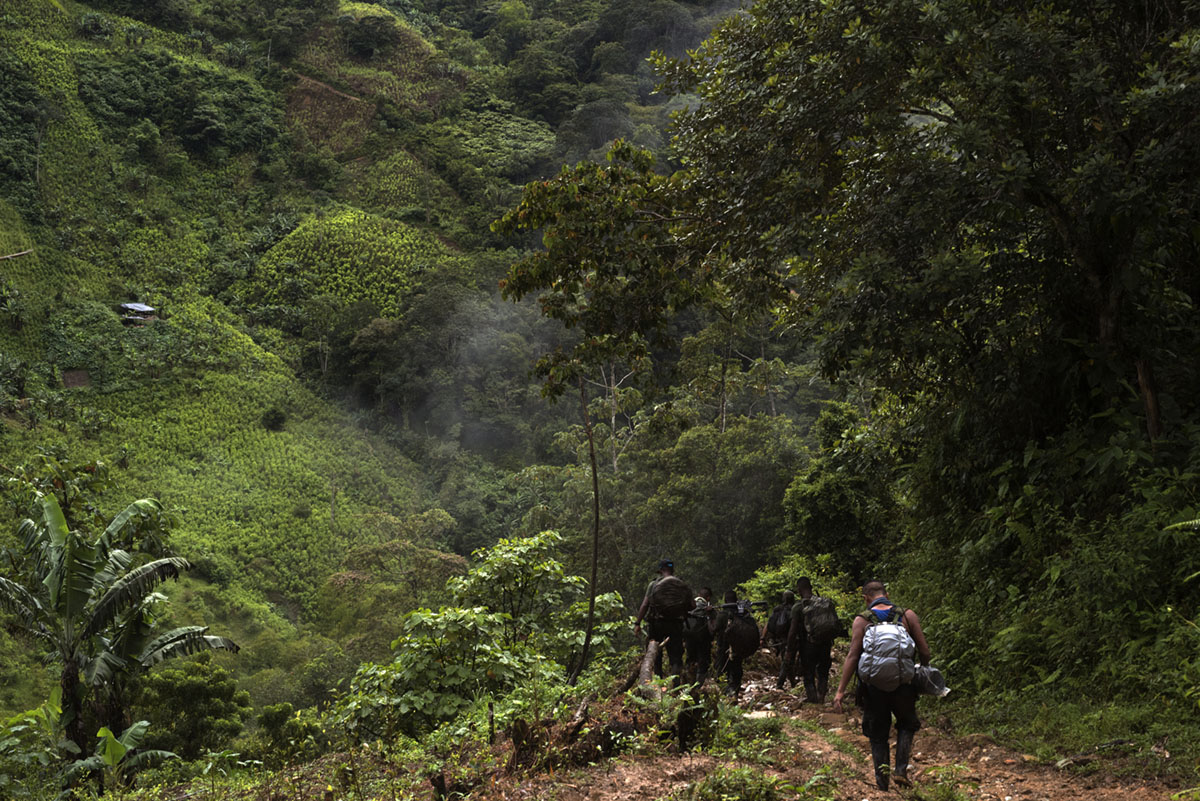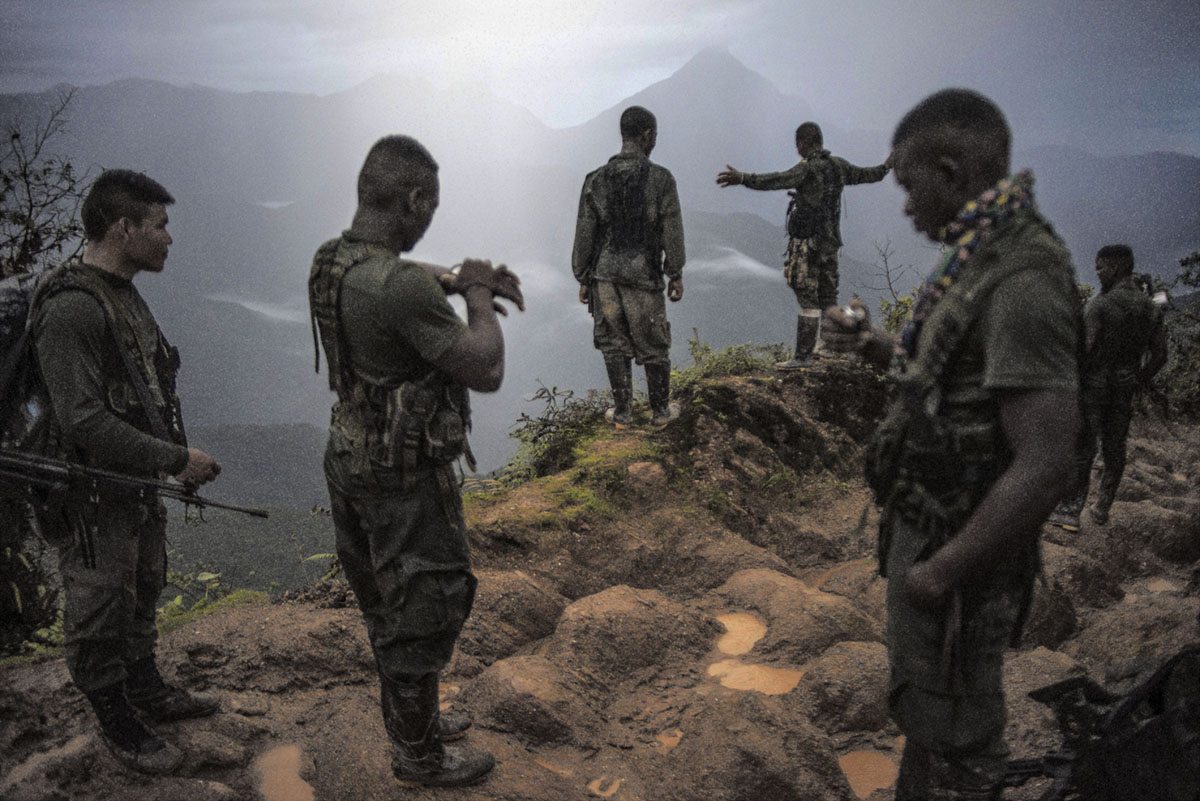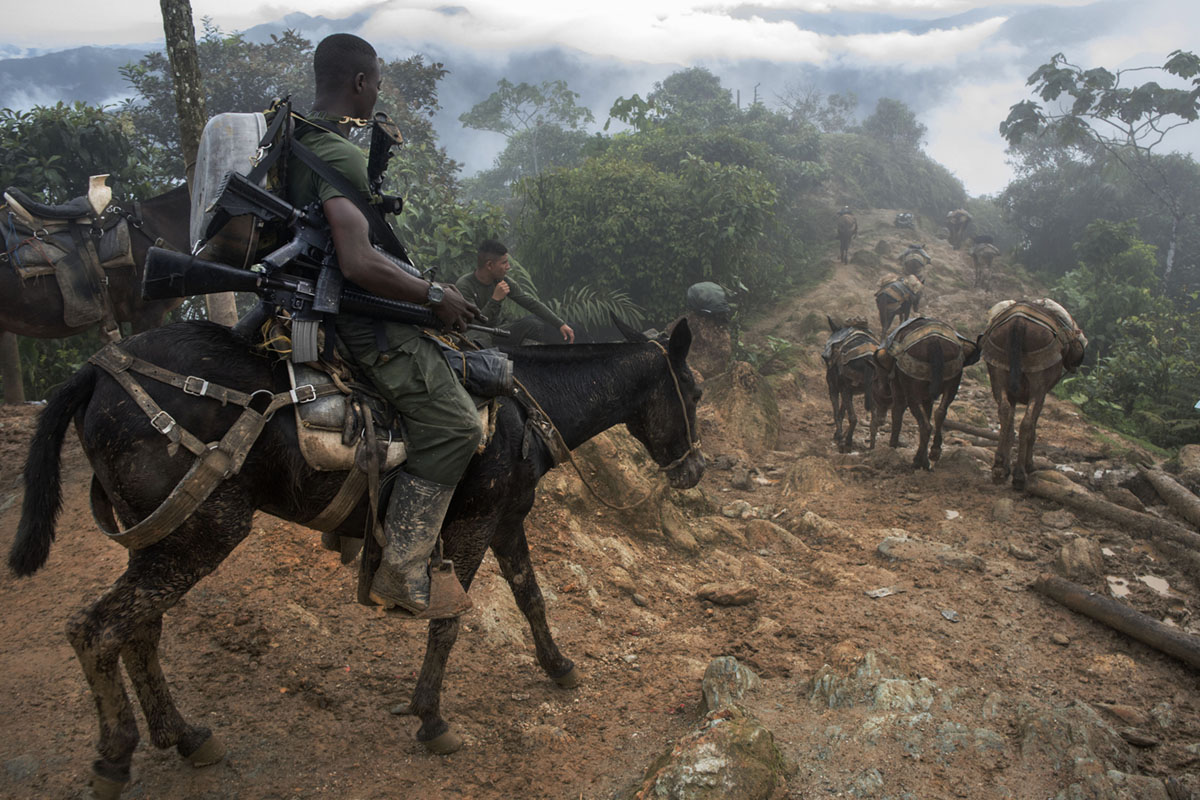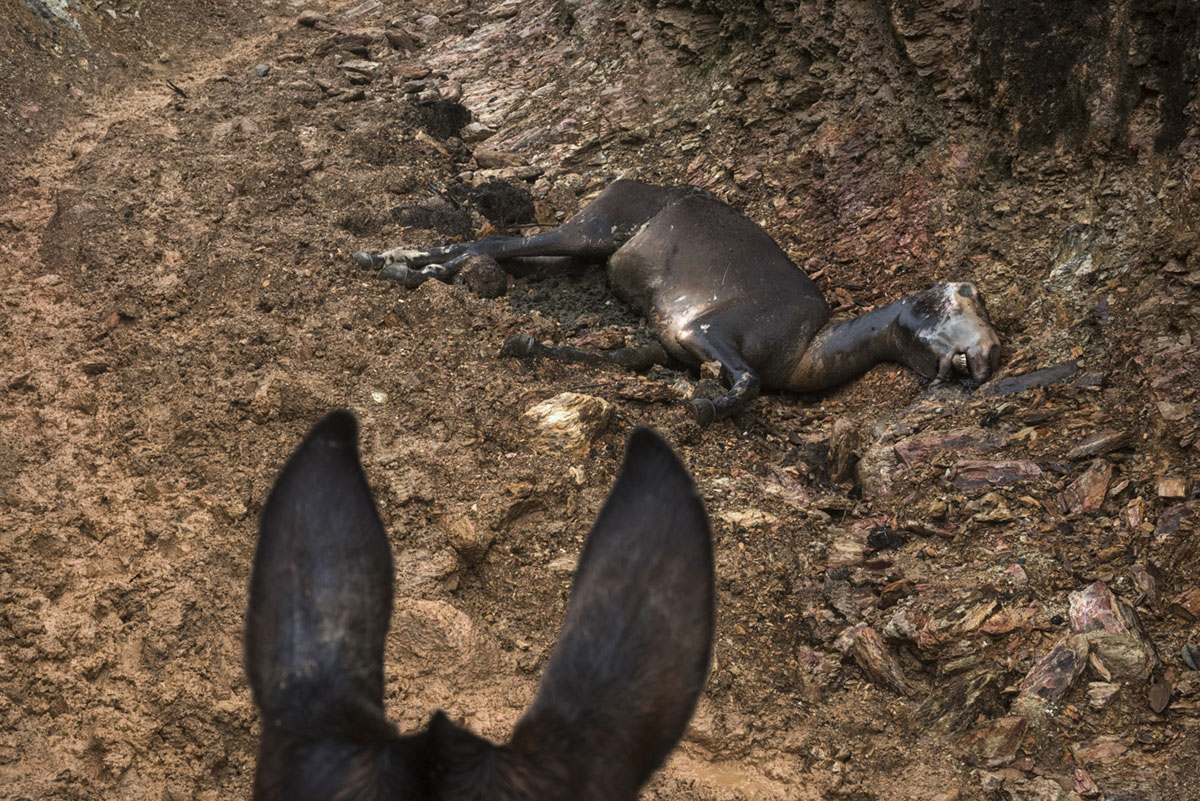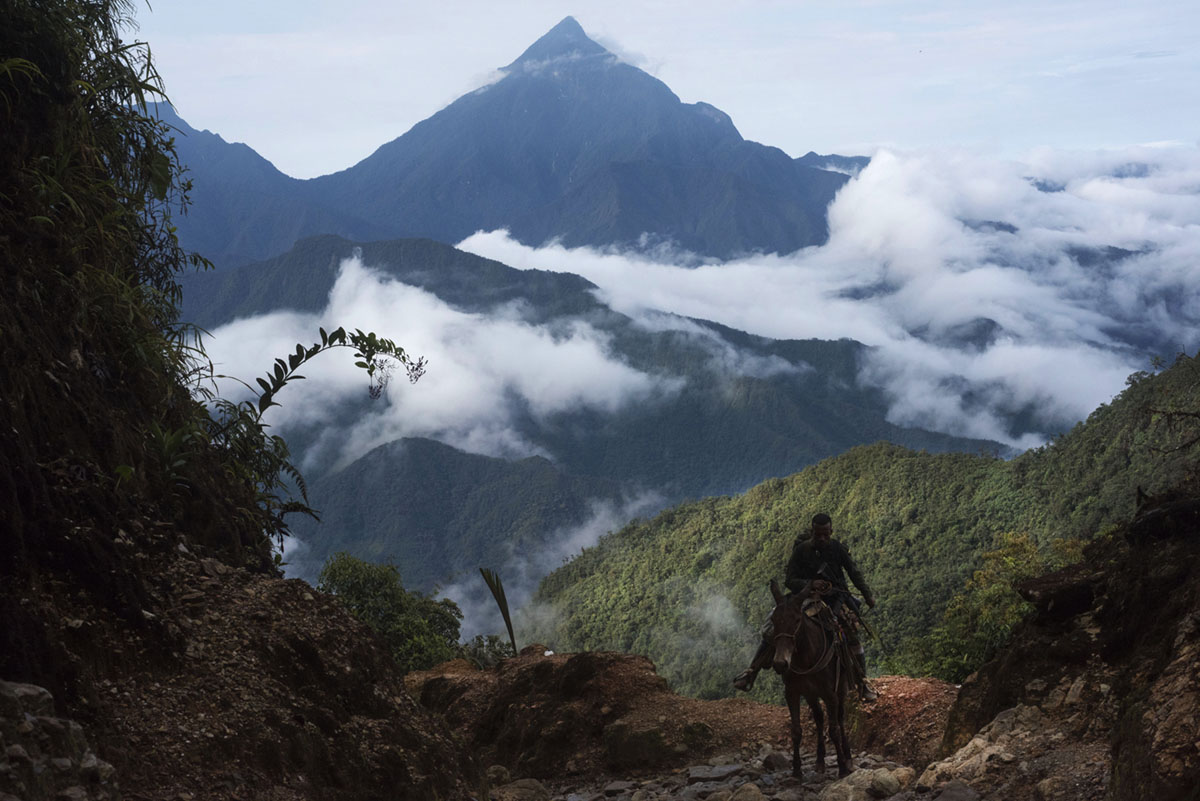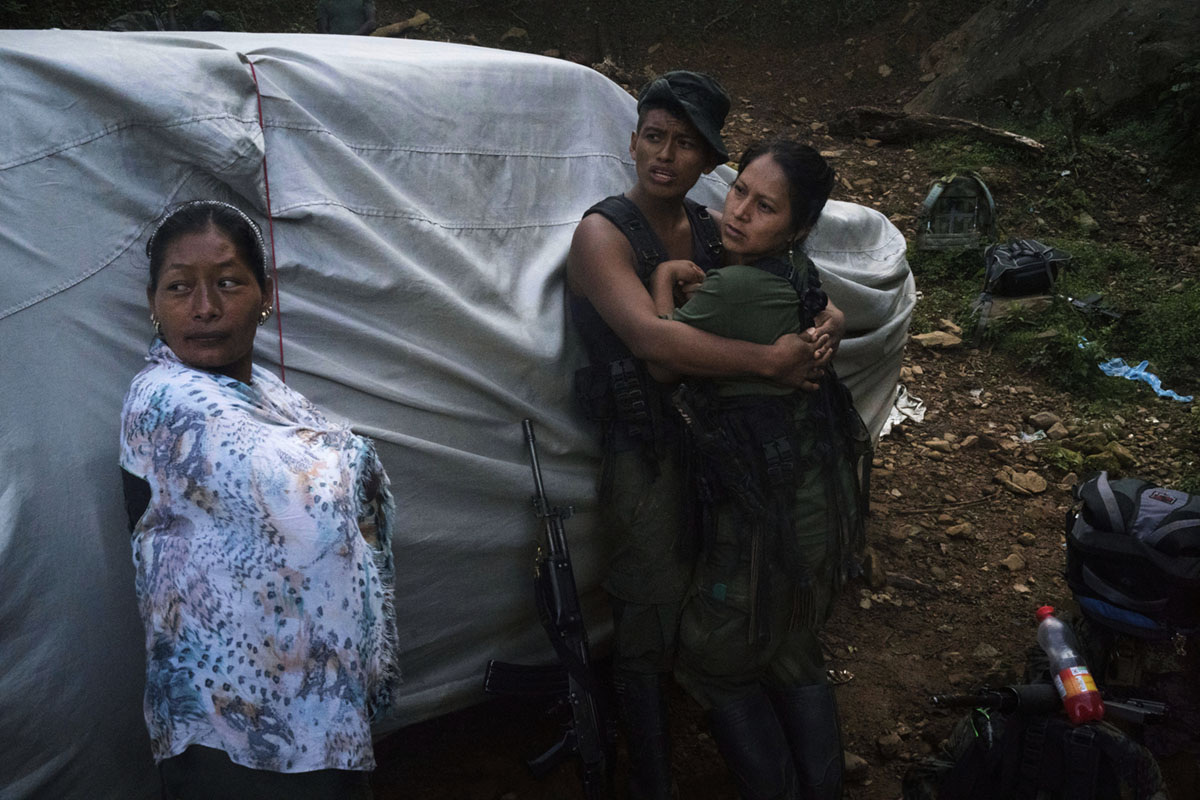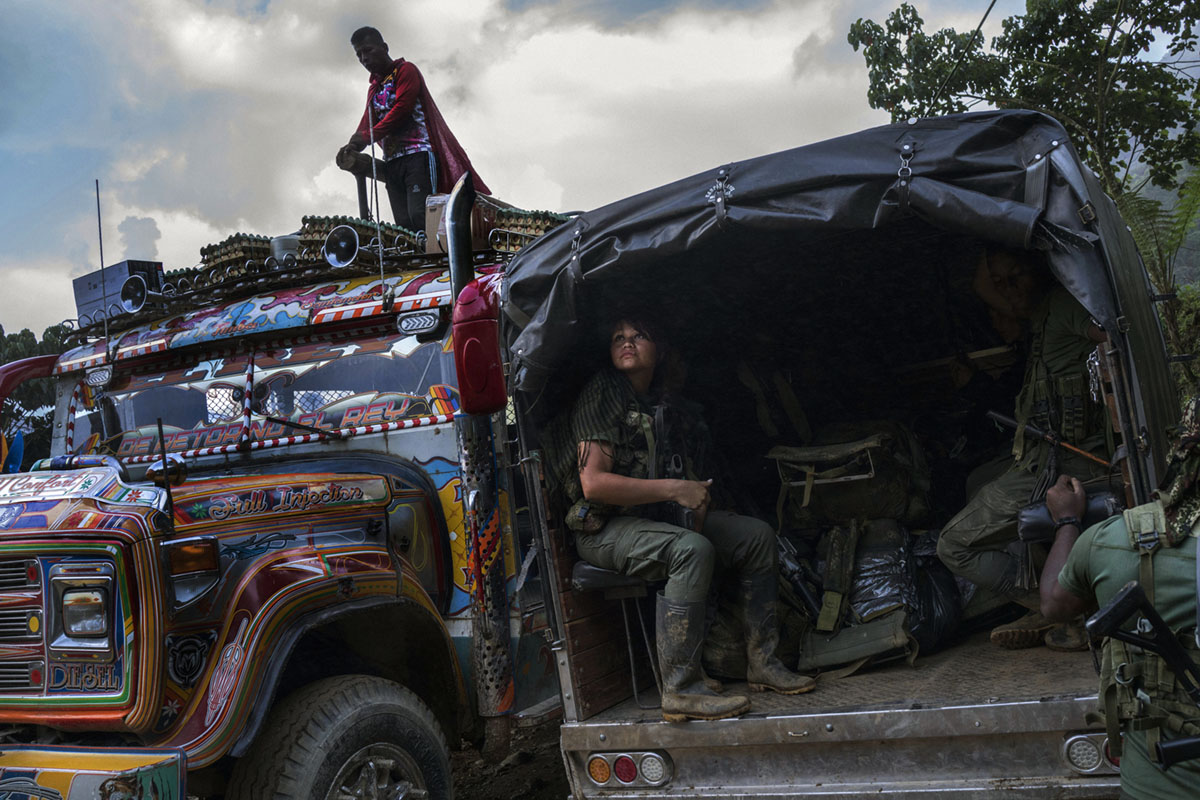In late 2016, the Colombian government and the FARC signed the Havana Peace Accords. The treaty aims to end Colombia’s fifty –year old internal conflict, which was marked by extreme violations of human rights by all parties. Hammered out over four years of negotiation, the accord seeks to address structural causes of the war through land and political reform.
Largely hopeful in tone, these photographs place us beside fighters of 30th Front of the Revolutionary Armed Forces of Colombia (FARC) insurgent army on an epic journey out of their historic bastion along the Naya River and over the Western Cordillera mountains. They carried out this last march to concentrate their troops in UN-monitored camps, in compliance with the peace treaty.
Too little time has passed to know whether Colombia truly entered into an era of peace. But there are disturbing indicators that war, or at least a chronic state of social and political violence, may continue. The assassination of social leaders and human rights defenders has actually increased since the peace treaty. The government has so far done little to carry out land reforms meant to prevent future conflicts. Many Colombians now use the term ¨post -treaty¨, rather than the ¨post-conflict¨ so as not to gloss over continuing violence.
So, how will these pictures be read in time? As the successful culmination of a peace process? Or do they show a pause in a two-century old history of social conflict, whose root causes have still not been addressed? Perhaps the term “post-conflict” which sounds so definitive, actually hides more than it reveals.

